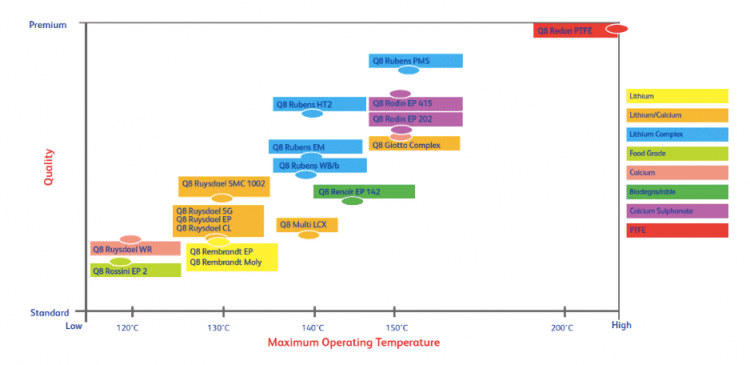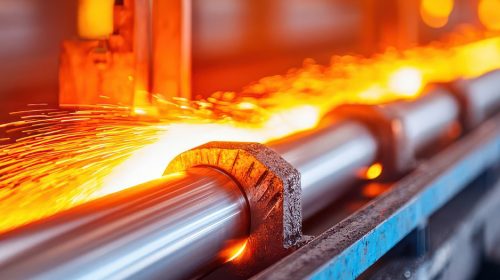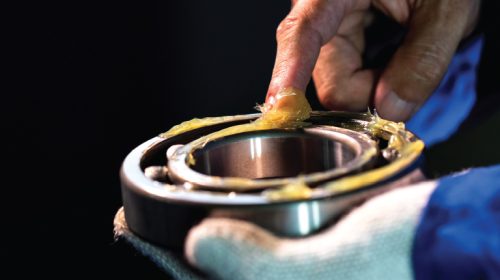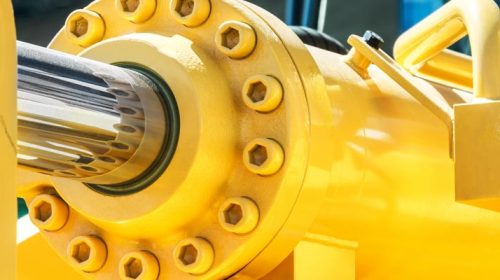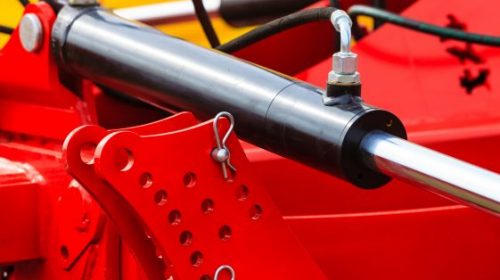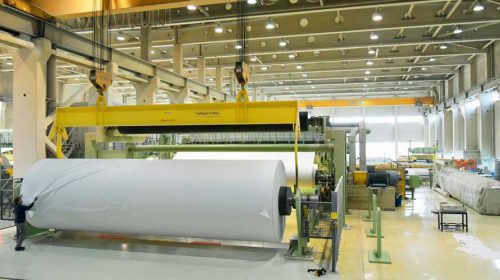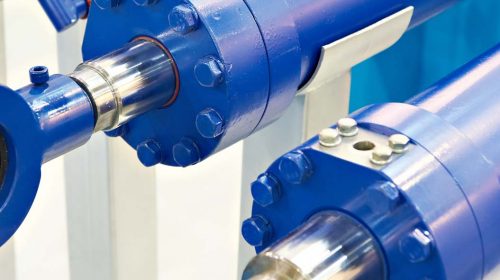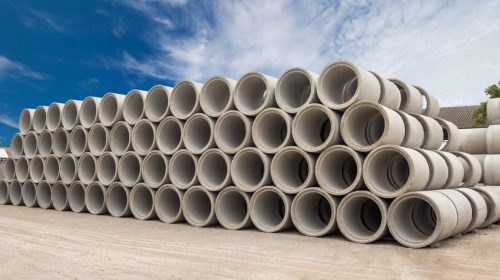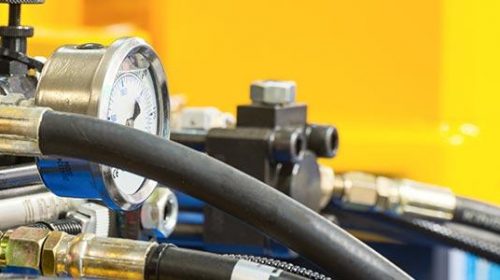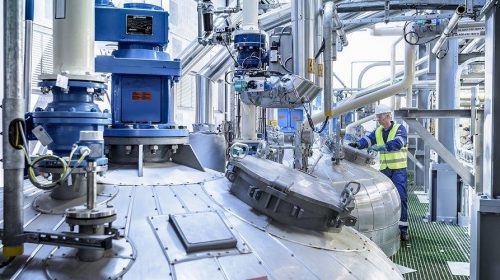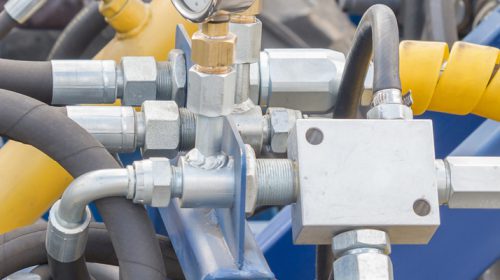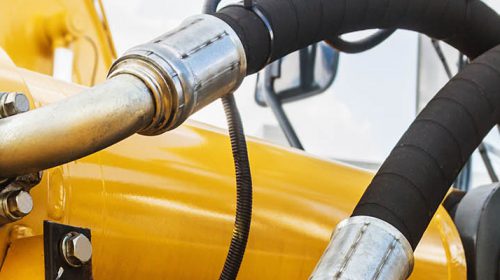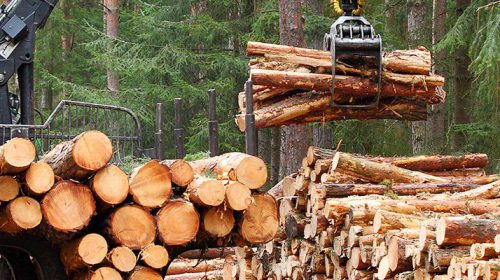Selecting the right grease is crucial to maximize the performance of your application. While the commonly quoted specifications give a general indication of which grease type to use, they do not necessarily take into account all working elements and parameters that influence system performance and efficiency. This article helps you to select the right grease for your specific application.
In many industries the grease specifications are rather generally described, such as: ‘NLGI (National Lubrication Grease Institute) n° 2 of high quality’, while in other cases OEM’s specify the grease by giving a brand product name together with some additional information like a DIN-or ISO-specification.
A specific grease for every application
However the oil products spectrum is extremely wide and varied and each product has specific qualities which makes it appropriate for specific applications. A proper grease product recommendation requires an extensive insight into all involved working elements:
- Operating temperature and conditions
- Load regime
- Rotation speed
- Type of application
Base oil viscosity
The majority of the applications involve the lubrication of bearings. For these applications the viscosity of the base oil is the most important parameter. Do not mistake this with the consistency as prescribed by the NLGI.
To figure out the minimal base oil viscosity, you need to know the following parameters:
- Mean bearing diameter dm (mm)
- Bearing rotating speed (rpm)
- Operating temperature (°C)
The figure below shows how you can determine the minimal base oil viscosity for your application.
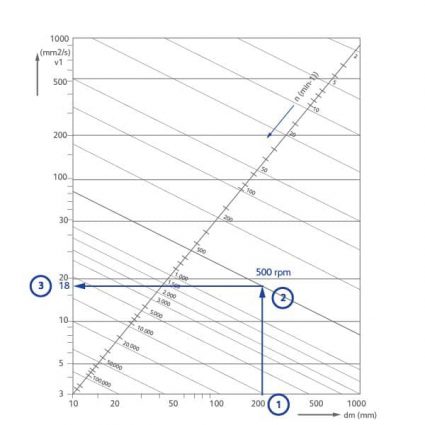
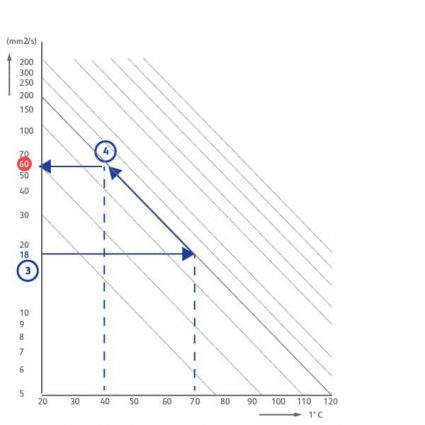
For example: bearing mean diameter 200mm.
Rotating speed 500rpm, operating temp 70°C
Step 1: mean diameter 200mm
Step 2: rotating speed: 500 rpm
Step 3 : it defines base oils viscosity at operating
Temp => approx 18 mm²/s
Step 4: 18mm²/s at 70°C is at 40°C (follow the arrows) it is approximately 60 mm²/s
How does bearing rotation speed influence minimal base oil viscosity?
- Higher bearing rotation speeds require a lower viscosity
- Lower bearing rotation speeds require a higher viscosity
How does operating temperature influence minimal base oil viscosity?
- Higher operating temperatures require a higher viscosity
- Lower operating temperatures require a lower viscosity
How does mean bearing diameter influence minimal base oil viscosity?
- Bigger mean bearing diameters require a lower viscosity
- Smaller mean bearing diameters require a higher viscosity
Base oils and thickener type
Greases are commonly based on group I and II mineral base oils. These greases are appropriate for applications with an operating temperature up to 120°C. For applications with extreme low or high operating temperatures, synthetic base oils with PAO or Ester are used. These base oils are also suitable for applications where an extended drain interval is needed or when food grade approvals and/or bio-degradability are necessary.
Next to the base oil, thickeners also determine the basic structure of greases and classify them into different types. Different types of thickener soaps and non-soap thickeners are used, each with their specific properties. They can vary in:
- Water resistance
- Pumpability
- Dropping point
- Thermal stability
- Mechanical stability
Soap thickeners can be categorized into metal soap thickeners (Li, Ca, Al, …) and non-metal soap thickeners polyurea, clay, silica gels, PTFE, …)
| Performance property | Li | Hydrated Ca | Water free Ca | Li-Ca | Li-complex | Ca sulphonate | Ca complex |
| Thermal stabilithy | good | Poor | Good | Good | Excellent | Excellent | Very good |
| Shear stab | good | Good | Very good | Good | Very good | Very good | Very good |
| Water resistance | good | Very good | Excellent | Very good | Good | Excellent | Very good |
| Load carrying capacity | good | Moderate | Good | Very good | Very good | Excellent | Excellent |
| Dropping point | Good | poor | good | good | excellent | Excellent | Very good |
Grease consistency
The NLGI grade, which is a measure for the grease consistency, is determined by the thickener concentration and -type and to a lesser extend by the viscosity of the base oil. It is possible to have a grease with a high consistency NLGI 3 and a base oil viscosity of 40mm²/s. Also a very liquid grease (NLGI 00) with visocisty of 800 cst is possible.
A good rule of the thumb is to use greases with higher NLGI grades for applications with higher speeds.
The table below explains the different NLGI classes.
| NLGI Class | Penetration Number | Consistency at room temperature |
| 000 | 445-475 | Very liquid |
| 00 | 400-430 | Liquid |
| 0 | 355-385 | Semi-liquid |
| 1 | 310-340 | Very soft |
| 2 | 265-295 | Soft |
| 3 | 220-250 | Semi-solid |
| 4 | 175-2015 | Solid |
| 5 | 130-160 | Very solid |
| 6 | 85-115 | Extremely solid |
Grease performance
Once all the above mentioned parameters are determined, the following performance properties of the grease are used as selection criteria:
- Dropping point
- Water washout
- Pumpability
- Environmental friendliness
These properties are mostly defined by the application conditions: water, extreme pressure performance, steam, temperature, food industry, bio degradable, harsh conditions, …
For example, it is not necessary to use a high temp grease when the bearing is mostly working at ambient temperature. And a light loaded high speed bearing does not need high performance EP additives.
The following overview presents the Q8oils grease range in terms of performance at operating temp.
